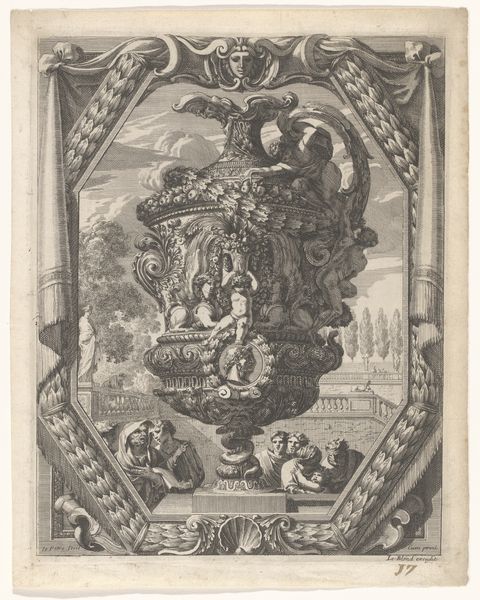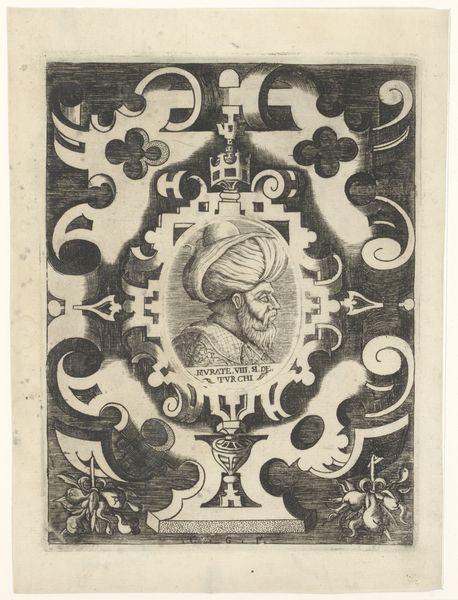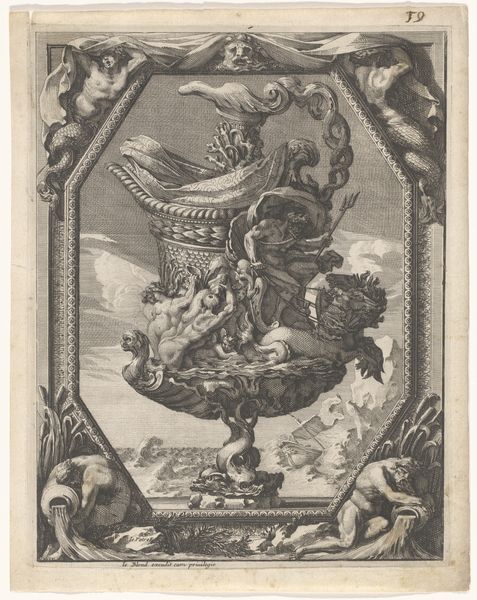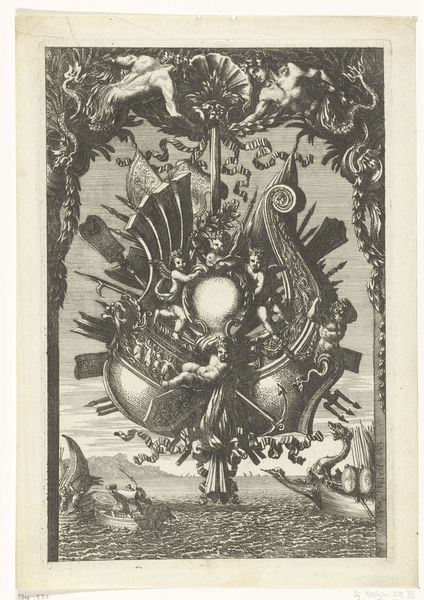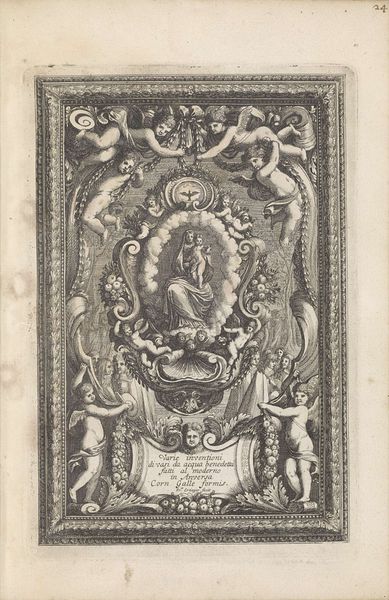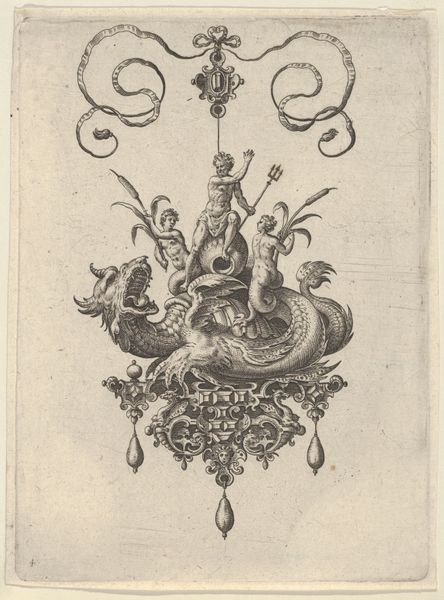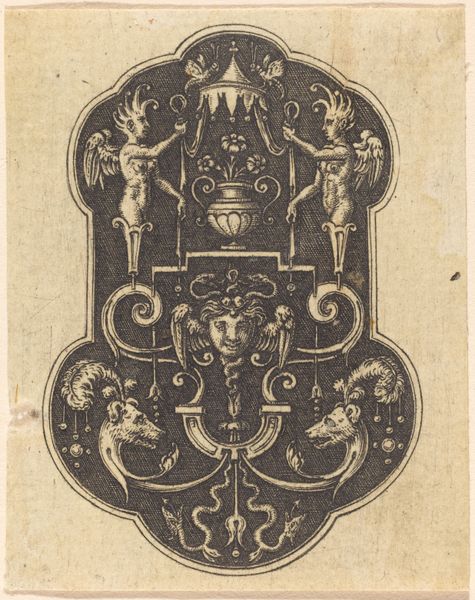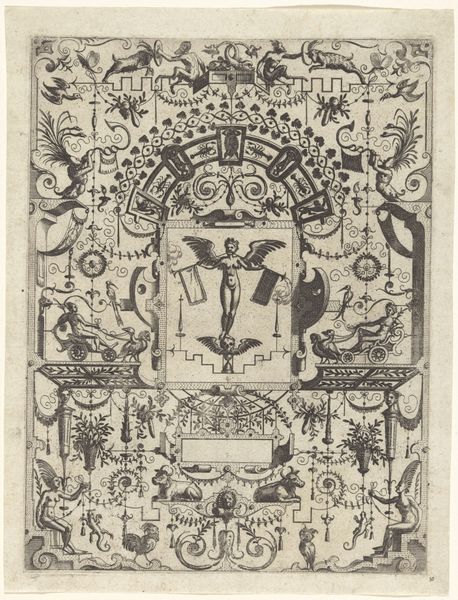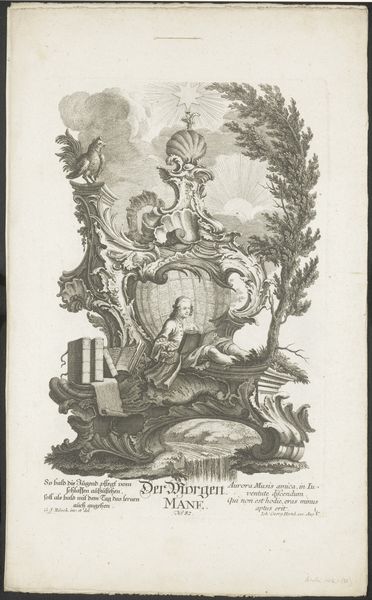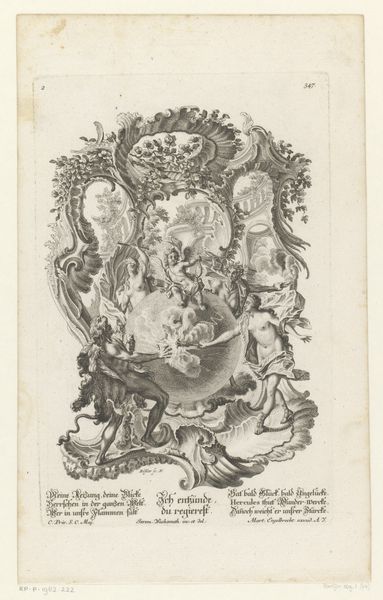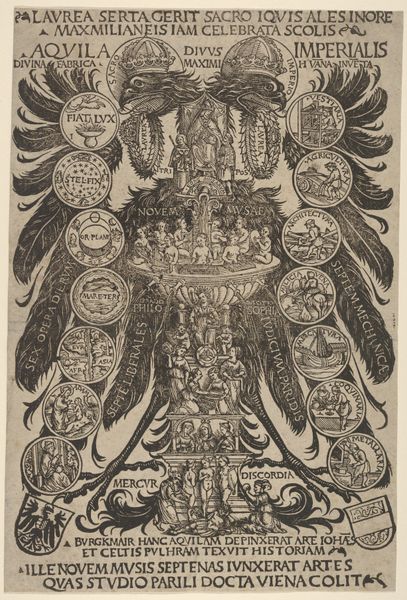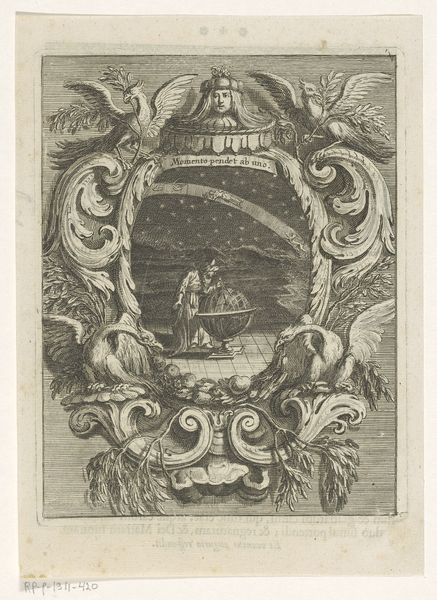
print, engraving
#
baroque
#
pen drawing
#
ink paper printed
# print
#
old engraving style
#
woodcut effect
#
line
#
decorative-art
#
engraving
Dimensions: height 278 mm, width 217 mm
Copyright: Rijks Museum: Open Domain
Curator: Look at this intricate engraving titled "Schenkkan met naakte jongelingen," or "Ewer with Naked Youths," created by Jean Lepautre after 1664. Editor: Immediately, I’m struck by the sheer density of the design; it’s a feast for the eyes, almost overwhelmingly ornamental. The detail is quite impressive. Curator: Indeed. Lepautre was a master of Baroque ornament, and this piece exemplifies the period's love of complexity. It’s more than just decoration, though; it speaks to the power dynamics embedded within design. Look at the representation of those youths – are they purely aesthetic, or does their nudity hint at the objectification inherent in systems of patronage? Editor: I see your point about power. The material excess, the labour involved in creating such an elaborate design and the purpose this object would have served – the display of wealth, social standing – these factors were undeniably interwoven. We can’t separate this from the processes and values of the era, its consumption. Curator: Absolutely. And what about the function of the ewer itself, traditionally used for washing, cleansing? Is there an implied connection to notions of purity and innocence contrasted against the eroticized portrayal of the youths? It begs questions about morality and its representation in art. Editor: Good points. And given this object's materiality as an engraving, a reproducible image on paper – it democratizes access to the imagery while still reinforcing certain social hierarchies tied to art ownership and aesthetic taste. What strikes me is how easily we overlook the implications of making an object such as this through printing, and all the stages in its production that went on. Curator: It certainly reminds us to interrogate the context in which art is created, to avoid passively consuming images. It forces us to ask what ideology this beauty serves and for whom is it created? Editor: It definitely enriches my understanding, acknowledging the means by which design becomes emblematic of broader societal power structures. Curator: It adds layers, prompting considerations beyond just appreciating it on its surface as pretty decor. Editor: Right, the making and the reproduction methods must be examined just as intently!
Comments
No comments
Be the first to comment and join the conversation on the ultimate creative platform.
